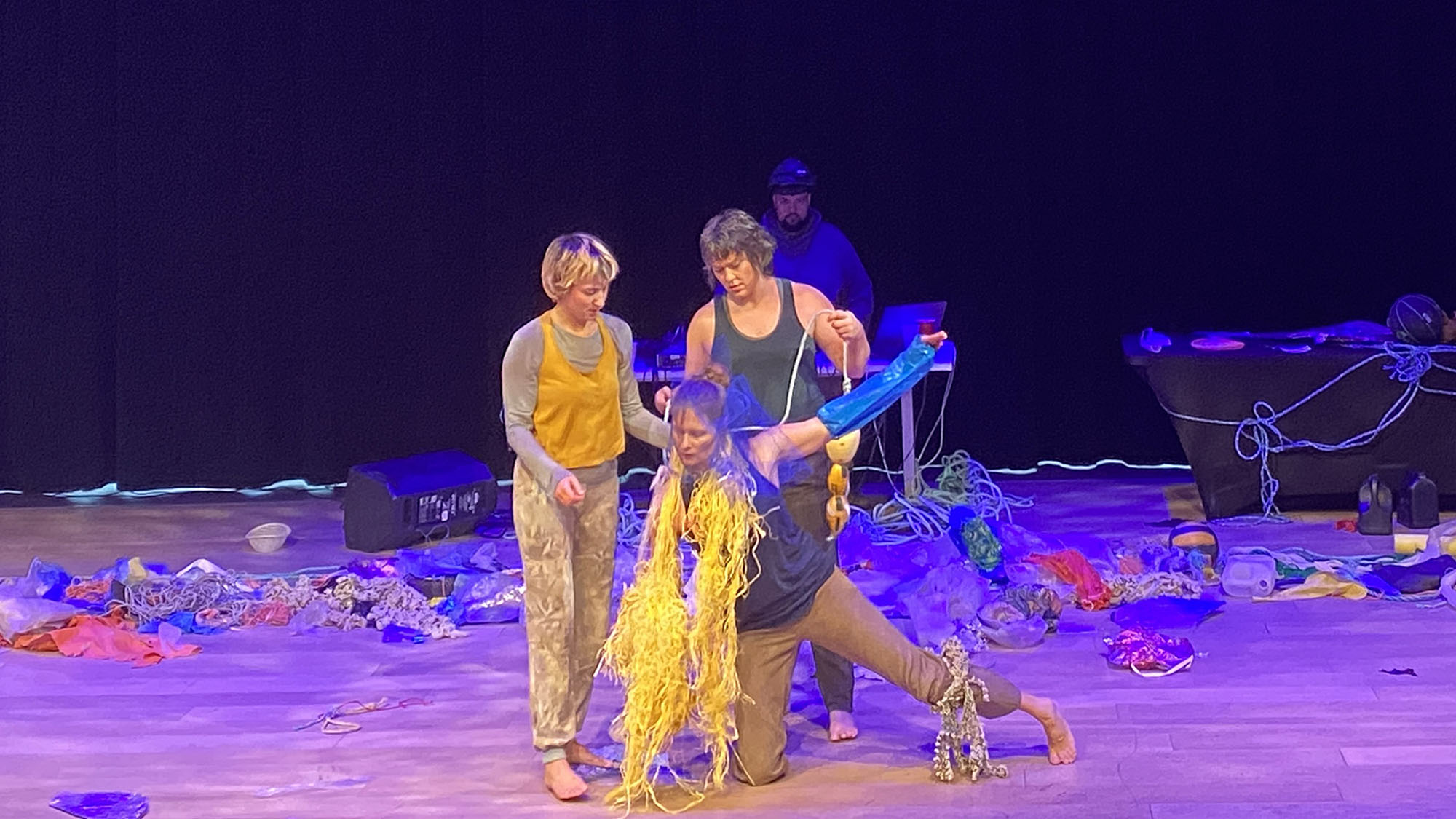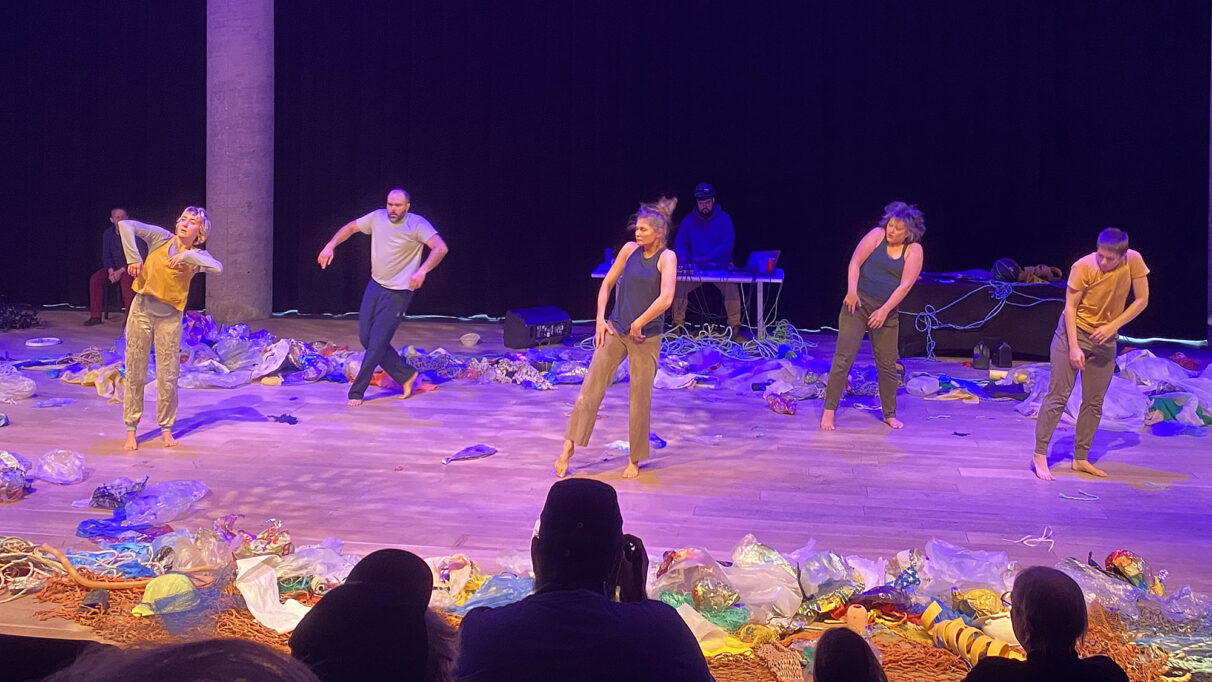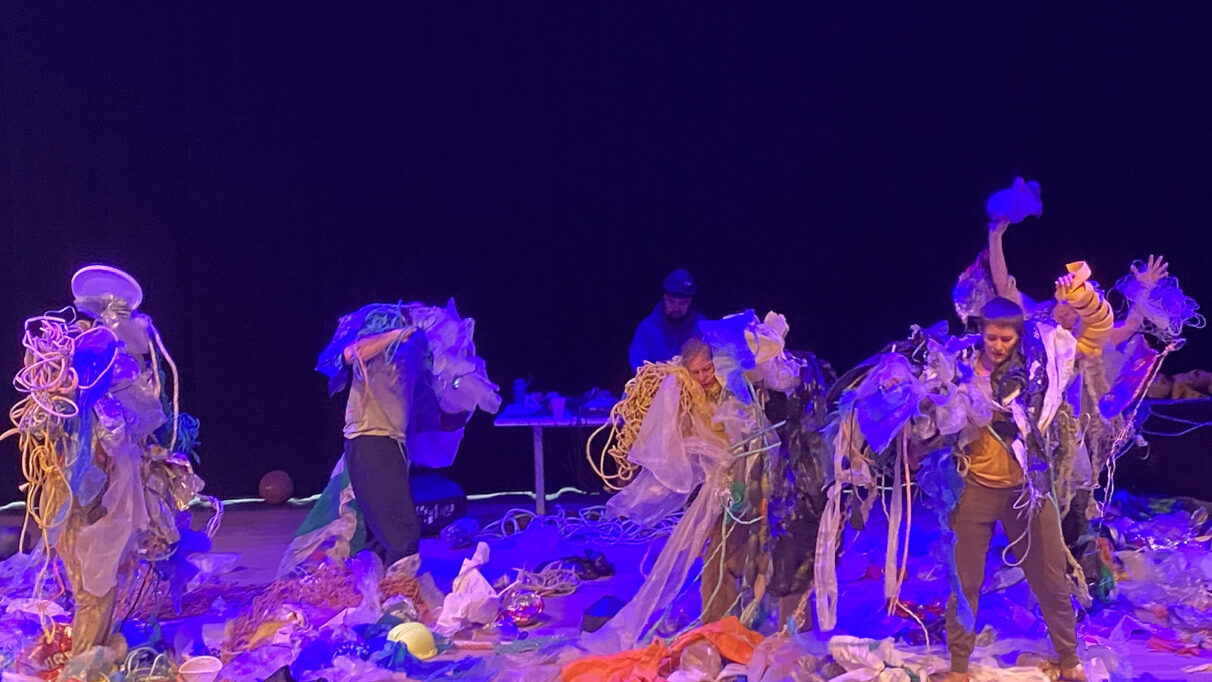Dance performance uses plastic waste to send green message
Mocean Dance partners with Sable Island activists to make environmental statement

caption
Members of Mocean Dance perform while interacting with plastic waste collected on Sable Island.A performance by a Halifax dance company on Saturday used trash collected from Sable Island to illustrate the problems created by plastic pollution.
The production by Mocean Dance, at Paul O’Regan Hall at the Halifax Central Library, was performed on a stage covered in plastic waste with which dancers draped themselves and each other in a whirlwind of movement.

caption
Performers hope to “use dance and art as a vehicle to bring issues of our time forward.”Pieces ranged from ropes to toys, trash bags to milk jugs, and many items were degraded beyond recognition. Blue tarps were carried and swayed to emulate ocean waves. A plastic turtle, voiced by an offstage narrator, explained how plastic is made and how products end up on island shores. Origin stories of certain items were shared, such as a child’s first basketball.
More than 200 people attended the world premiere of Sea Unseen, billed as “an immersive dance performance with plastics collected from Sable Island.”
The idea originated with naturalist Zoe Lucas, founder and president of the Sable Island Institute. She has been conducting research and monitoring programs on Sable Island since the 1980’s, including studies of persistent litter in the marine environment.
Lucas was searching for a powerful way to communicate the environmental impact of plastic pollution on Sable Island.
“I was wondering, how would you capture the sense of plastics and the impact of plastics in a more visceral kind of way, in a more emotional kind of way that sort of touches you a bit more than a photograph or a presentation or a film would?” said Lucas.
“And I just thought of the arts and people, dancers, performers, interacting with the plastics in a way that you could kind of relate to how marine animals, seabirds or dolphins or fish would interact with plastics in the ocean.”
Lucas approached Mocean Dance with her idea, and co-artistic director Sara Coffin said she and her colleagues were eager to collaborate.
“We were excited to use dance and art as a vehicle to bring issues of our time forward,” said Coffin, who was one of the project’s four creative directors and one of five dancers in the performance.

caption
Dancer Reg Rose on interacting with the plastic: “it was really intense.”The wide-ranging creative team included choreographers, a puppeteer, a dramaturge, a composer and Mi’kmaq ecologists.
Coffin said the Mi’kmaq perspective was invaluable to the project.
“Mocean is not a plastic expert or an environmental activist. The biggest thing we can do is bring people back in relationship to the land, in relationship with water, and think about their choices, and who’s the best expert to do that but the Mi’kmaq,” said Coffin.
Meredith Kalaman, one of the project’s four choreographers, said her goal was not to induce guilt but rather to make people think.
“When we sit in shame, it’s a very low frequency and it doesn’t create change or action, it actually kind of creates like a freeze in the nervous system,” said Kalaman. “So I was using questions to invite the audience into a different place.”
The plastic used in the performance was bleached in the sun and meticulously cleaned before Mocean Dance received it. Dancers wore masks in rehearsal to prevent them from inhaling sand and degrading microplastics.
Dancer Reg Rose said they found the process both “amazing” and “challenging.”
“The first couple of weeks of rehearsal, especially the first week, I was just feeling the deep grief of engaging with this on a daily basis,” said Rose. “and feeling so impacted by every morning having to take all of this out and every evening having to pack it up and move around and engage with it and touch it and feel the microplastics in the air. And it was really intense.”
Rose said that through “research and experimentation,” they experienced “feeling kinship with the plastic, and actually developing a relationship of care between myself and the objects. And that was a really transformative thing.”
Following the performance, Lucas told the audience that “we have a lot of choices” moving forward and underlined the importance of re-examining “frivolous uses” of plastic.
“Do we really need so many water bottles?” said Lucas. “Let’s just always cut down less and less, and then we can tackle how to replace plastics in the bigger things like in medical devices and hard hats.”
Audience member Ed Brown said he hopes this project will inspire people to help create a better future for his six-year-old grandson, who attended the performance with him.
“You hope that something like this will bring attention to somebody, that it will add to the people that are trying to stop it,” said Brown.
The final performance of Sea Unseen is Nov. 13 at 7:30 p.m. at Paul O’Regan Hall at the Halifax Central Library. Admission is free.
About the author

Indra Egan
Originally from Northern BC, Indra Egan is a Bachelor of Journalism student at King's. She has a M.Mus. in Collaborative Piano from the University...
